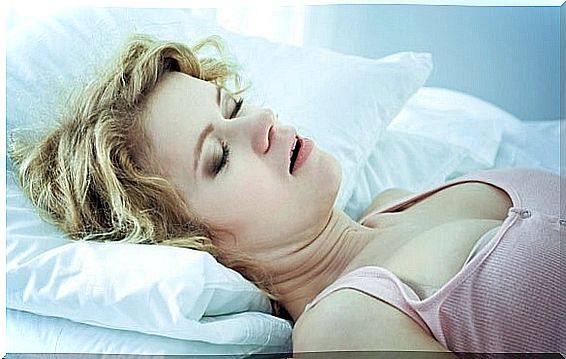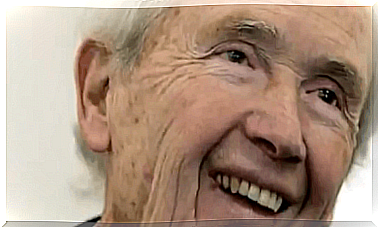Atypical Depression, Beyond Sadness And Physical Exhaustion

Despite its name, atypical depression is a fairly common disorder. It shares characteristics similar to major depression; However, this condition stands out for symptoms as unusual as being able, at times, to respond positively to our environment, have a good appetite, and in turn suffer from great heaviness in the legs and arms.
This clinical term made its first appearance in the 1950s. It was something accidental, something that many psychiatrists perceived when they saw how certain patients diagnosed with depression did not respond to ordinary antidepressants. They had to analyze these people more closely to find common factors and thus understand what particularity existed in their depressive disorder.
The first thing they observed is that these patients showed pain in their arms and legs. According to them, it was difficult for them to move because their limbs were heavy. Likewise, they also observed that they showed very atypical symptoms regarding major depression, such as hypersomnia or hyperphagia (overeating).
Furthermore, the mood of the analyzed patients worsened in the evening ; However, in the morning they were able to respond to praise, were grateful for visits, and were able to respond positively to certain stimuli. After collecting data and finding all these commonalities, they were able to describe this other typology and call it ‘atypical depression’.
From that moment on, it was easier to design new pharmacological treatments taking these factors into account. Furthermore, many professionals estimate that almost 20% of depressions are actually atypical, and therefore require a unique psychological and pharmacological approach. Let’s look at it in more detail.

Atypical depression: symptoms and characteristics
From a clinical point of view, studies such as those carried out by Jonathan RT Davidson, from the University of California, indicate that biological or vegetative symptoms stand out above all in atypical depression. They are people who complain above all about physical discomfort, exhaustion, ‘not being able to with their bodies’.
Something like this causes that in many cases this condition is camouflaged, making diagnosis difficult. The patient may think that everything he suffers is the result of work exhaustion, accumulated fatigue or even more, symptoms associated with poor diet or lack of exercise. However, the DSM-V already defined in old editions that atypical depression is persistent; therefore, in case of not requesting help or not having an adjusted diagnosis, we can derive in very debilitating states.
Let’s see what are the most obvious characteristics of this psychological condition.
Your mood reacts to positive stimuli
One of the characteristics of major depression or even dysthymia is the inability to react to positive situations or stimuli. The person has serious difficulties to enjoy, to experience joy or well-being. In the case of atypical depression, the patient does experience small moments of positivity when he receives a significant visit, when someone offers him encouragement or praise.
Anxiety, nervousness, restlessness, and distrust
Atypical depression is highly comorbid with other disorders, such as anxiety or even bipolar disorder. This means that among the most common symptoms that evidence this condition is nervousness, hypersensitivity, the constant feeling that something bad is going to happen, etc.
Likewise , it highlights the difficulty of maintaining happy or stable affective relationships. These patients are characterized by permanent distrust, by being very sensitive to criticism or by fear of being betrayed or abandoned.
Lead paralysis
Lead paralysis refers to what was indicated at the beginning: heaviness in the extremities. It is an intense fatigue that is concentrated in the arms and legs to the point of feeling pain, of having clear difficulties in mobility.
Hypersomnia
Excessive sleepiness is another obvious factor in atypical depression. The person sleeps excessively, takes long naps, gets up late in the morning and has clear difficulties to be productive at work. Also, the most striking thing is that it does not matter how many hours you sleep, because fatigue is permanent and you do not have the feeling of having regained strength or energy.

Big appetite
Anxiety and nervousness also push the person to experience an almost constant hyperphagia. It is a hunger that is not relieved and that leads them to an almost compulsive intake.
What treatments are there for atypical depression?
According to Cristancho, O’reardon and Thase (2012), atypical depression has a chronic course, is more common in young women and, in turn, is the most common form of depression in outpatient admissions. When a person does not receive treatment and also has comorbidities with other disorders such as anxiety or bipolar disorder, serious situations or suicide attempts can occur. It is important to keep this in mind.
Regarding the strategies when dealing with atypical depression, it should be said that these will depend on the particular case of each patient. It is common, for example, that many women also come to consultation with eating disorders, such as bulimia. However, it should be noted that through psychological therapy and adequate pharmacological treatment the life of the patient can be greatly improved.
- Cognitive-behavioral therapy allows us to work on ideas, mental approaches and behaviors to improve social competence on a day-to-day basis.
- Likewise, it has been found that treatment with monoamine oxidase inhibitor antidepressants (MAOIs) produces very evident improvements.
To conclude, only one more detail should be noted. Atypical depression is more common than we think and usually has an early onset (over 20 years). A timely detection allows us to offer the person the opportunity to have greater control over their reality and have adequate strategies to give themselves the opportunity to be happy, to move forward with greater security.









